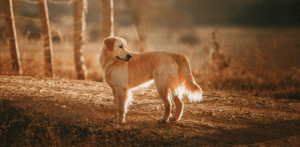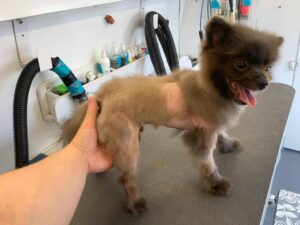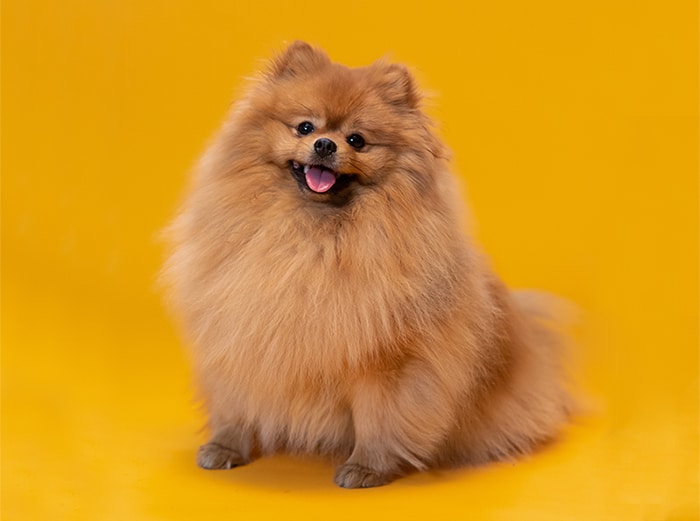What is a Double-Coated Breed?
There are many different coat types among hundreds of different dog breeds. The American Kennel Club recognizes 197 different breeds. Of these breeds, there are several that would be considered double-coated. A double coat is what people usually think of as a “shedding” coat. Golden Retrievers, Australian Shepherds and Labrador Retrievers are excellent examples of these breeds. Any mix of these double-coated breeds also has the chance of having a double coat, or “shedding” coat, as well.

The Science Behind Double-Coated Dogs
It is important to remember that most dogs were bred for a purpose. Golden Retrievers, for example, were bred to be service dogs, perform search and rescues, retrieve game for hunters and excel at other training. Their hair is meant to withstand being out in the elements and retrieving in fields or water. Their coats are thick enough to protect them from harmful UV rays, wind damage and extreme cold and heat.
The coat on a double-coated breed is designed to keep the dog’s temperature regulated. This applies to hot and cold weather – each hair follicle has a muscle that lifts and drops the hairs as needed to cool and create warmth for your pet. Each hair follicle produces one longer, coarse guard hair and 7-27 secondary hairs. The secondary hairs are what are considered the undercoat. It is the soft, dead hair that sheds out of the coat. In a dog with a well-maintained, healthy coat, the undercoat should not shed excessively. If the dog is regularly bathed and groomed, ideally by a professional pet groomer, your dog’s shedding will be minimal.
A shaved double-coated dog has to work harder to regulate its temperature. Shaving your pet neither helps it stay cooler nor reduce shedding. A common statement we hear is, “well my dog just stays in the house so it doesn’t matter.” The problem is that it does matter. Your dog’s body has to work significantly harder to regulate its temperature. The thick undercoat of double-coated dogs needs to be brushed out regularly, and they tend to drop their undercoat when it starts to get warm. If we cut into the undercoat, it confuses the dog’s body and can result in a syndrome called post clipping alopecia.
Post Clipping Alopecia
Post clipping alopecia is a syndrome where the hair takes a significant period of time to regrow hair follicles. When this happens, there can be patches of baldness and discoloration throughout a dog’s entire body with little chance of being able to regrow the hair. This is very common among Pomeranians but also affects breeds like Chow Chows, German Shepherds, Huskies and Golden Retrievers, among others.

To Shave or Not to Shave
Unless medically necessary, typically due to a skin disease, you should never shave your double-coated dog. Shaving may cause severe skin problems as well as a potential of the coat not growing back. This is why we will not shave double-coated breeds at Smoochie Pooch. It is our job as professionals to care for the skin and coat of every dog, and shaving the coat of these breeds causes significant issues both seen and unseen.
Proper Care for Dogs with a Double Coat
The recommended grooming for double-coated dogs involves regular baths and brush outs every 4-6 weeks, which allows the undercoat to release and the dog’s skin to breathe. Contrary to what you might think, your double-coated dog will actually be cooler with a full coat as long as it is properly maintained. Have questions about how to properly care for your double-coated dog? Are you considering shaving your pet? We highly recommend speaking to your professional pet stylist about alternatives to shaving and recommendations on proper maintenance for your fur baby.



